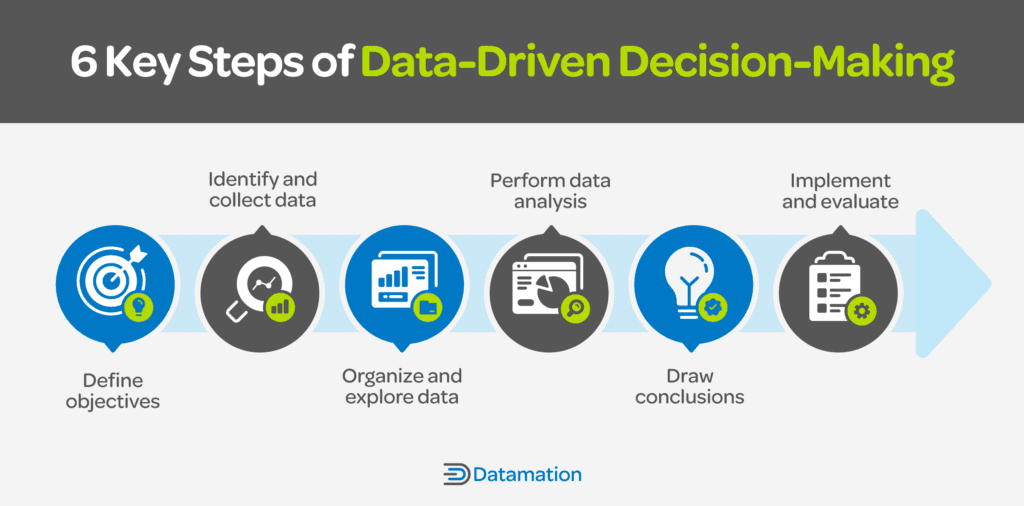In today’s fast-paced business world, data-driven decisions are key. Business Intelligence (BI) tools help in making sense of vast amounts of data.
Understanding which BI tools to use can be overwhelming. Each tool offers unique features and benefits. Choosing the right one can transform raw data into valuable insights. These insights drive better decisions and improve business outcomes. This guide will introduce you to the top BI tools available.
We will explore their strengths and how they can help your business thrive. Stay tuned to find out which BI tools are the best picks for your needs.

Credit: www.datamation.com
Power Bi
Power BI is a popular business intelligence tool by Microsoft. It helps businesses make data-driven decisions. With Power BI, you can visualize data and share insights across your organization. It is user-friendly and integrates well with other Microsoft products.
Key Features
Power BI offers a range of features to simplify data analysis. The drag-and-drop interface makes it easy to create custom dashboards. You can connect to multiple data sources, including Excel, SQL databases, and cloud services. Power BI also has built-in AI capabilities for advanced analytics.
Another key feature is the ability to share reports and dashboards. You can publish them to the Power BI service and collaborate with team members. The mobile app allows you to access your data on the go.
Pros And Cons
Power BI has many advantages. It is easy to use, especially for those familiar with Microsoft products. The visualization options are extensive, helping you present data clearly. The integration with other tools like Excel and SharePoint is seamless.
There are some downsides too. The free version has limited features compared to the Pro version. It can be expensive for larger teams. Some users find the learning curve steep for advanced features.
Tableau
Tableau is a leading business intelligence tool known for its powerful data visualization capabilities. It helps organizations make data-driven decisions by turning raw data into insightful visualizations. Users can create interactive and shareable dashboards, making it easier to understand complex data. Let’s explore Tableau’s key features, pros, and cons in detail.
Key Features
- Data Blending: Combine data from multiple sources into a single view.
- Real-time Data Analysis: Get instant insights from live data.
- Interactive Dashboards: Create and share dynamic dashboards.
- Advanced Analytics: Apply statistical functions and forecasting.
- Mobile Compatibility: Access dashboards on mobile devices.
Pros And Cons
| Pros | Cons |
|---|---|
| User-friendly interface | Higher cost for small businesses |
| Strong visualization capabilities | Requires training to use advanced features |
| Handles large datasets efficiently | Limited customization options for reports |
| Good customer support | Performance issues with complex queries |
Qlik Sense
Qlik Sense is a modern business intelligence tool designed for data-driven decision-making. It allows users to easily visualize and analyze data. With Qlik Sense, you can turn raw data into actionable insights.
Key Features
Qlik Sense offers a range of features that make data analysis simple and effective. The tool provides interactive dashboards and allows users to create custom reports. It also supports data integration from various sources. Advanced analytics and AI capabilities help uncover hidden insights. The platform is designed to be user-friendly, even for non-technical users. A drag-and-drop interface makes it easy to build visualizations.
Pros And Cons
Qlik Sense has several advantages. It offers powerful data visualization tools. It is user-friendly and requires minimal technical skills. The platform supports a wide range of data sources. It also provides robust security features to protect data.
There are a few drawbacks as well. The cost can be high for small businesses. Some users report a steep learning curve for advanced features. Customization options may be limited compared to other tools.

Credit: www.datamation.com
Looker
Looker is a powerful business intelligence tool designed for modern data analysis. It helps businesses make data-driven decisions with ease. With Looker, you can access real-time data and make informed choices quickly.
Key Features
Looker offers a range of features to help you analyze data effectively. These include:
- Easy-to-create dashboards
- Customizable reports
- Real-time data insights
- Data integration from multiple sources
- Collaboration tools for teams
Pros And Cons
Like any tool, Looker has its strengths and weaknesses. Here are some key pros and cons:
- Pros:
- User-friendly interface
- Scalable to meet business needs
- Strong data security features
- Excellent customer support
- Cons:
- Can be expensive for small businesses
- Requires training to use advanced features
- Limited offline access
- Some features can be complex
Domo
Domo is a cloud-based business intelligence tool known for its user-friendly interface. It helps organizations in data visualization and real-time data integration. Domo is suitable for businesses of all sizes, providing tools to transform raw data into actionable insights.
Key Features
- Real-time Data Integration: Domo offers real-time data integration from various sources.
- Data Visualization: Use interactive charts and graphs to present data.
- Collaboration Tools: Share insights and collaborate with team members within the platform.
- Mobile Accessibility: Access Domo on mobile devices with its dedicated app.
- Customizable Dashboards: Create dashboards tailored to specific business needs.
Pros And Cons
| Pros | Cons |
|---|---|
| Easy to use interface | High cost for small businesses |
| Wide range of data connectors | Limited offline functionality |
| Real-time data updates | Steep learning curve for advanced features |
| Strong collaboration tools | Requires good internet speed |
Sas Business Intelligence
SAS Business Intelligence is a powerful BI tool designed to help businesses make informed decisions. It offers a suite of applications for data reporting, analysis, and visualization. SAS BI is widely recognized for its robust analytics capabilities and user-friendly interface.
Key Features
SAS Business Intelligence comes with a range of features that enhance data analysis. Here are some of the key features:
- Data Integration: SAS BI allows seamless integration of data from multiple sources.
- Advanced Analytics: Utilize predictive and descriptive analytics to uncover trends.
- Interactive Dashboards: Create and share visually appealing dashboards.
- Custom Reports: Generate reports tailored to specific needs and preferences.
- Scalability: Suitable for both small and large enterprises.
Pros And Cons
| Pros | Cons |
|---|---|
|
|
Choosing The Right Tool
Choosing the right Business Intelligence (BI) tool is crucial for data-driven decision-making. With many options available, it can be overwhelming to decide. This section will guide you through key considerations and best use cases to help make an informed choice.
Considerations
First, evaluate the tool’s compatibility with your existing systems. Integration with your current data sources ensures smooth data flow. Consider the scalability of the tool. As your business grows, your BI tool should grow too. User-friendliness is also vital. A complex tool can slow down the decision-making process. Assess the cost. Ensure it fits within your budget. Lastly, check the support and training provided by the vendor. Good support can help solve issues quickly.
Best Use Cases
Different BI tools suit different needs. For real-time analytics, tools like Tableau or Power BI are ideal. They offer live data connections and interactive dashboards. If you need advanced data visualization, Qlik Sense is a great choice. It provides powerful visualization options and customization. For predictive analytics, consider using SAS Business Intelligence. It excels in forecasting and data mining. If your focus is on large-scale data processing, tools like Apache Hadoop are effective. They handle big data efficiently and offer robust analytics.

Credit: www.rib-software.com
Frequently Asked Questions
What Are Business Intelligence Tools?
Business intelligence tools help organizations analyze data. They enable data-driven decision-making. These tools provide insights through data visualization, reporting, and analytics.
Why Use Business Intelligence Tools?
Business intelligence tools improve decision-making. They provide accurate data insights. These tools help identify trends and patterns. They enhance overall business efficiency.
How Do Bi Tools Improve Decision Making?
BI tools provide real-time data. They offer visualizations and reports. These insights help identify opportunities and risks. They support strategic planning and actions.
What Features To Look For In Bi Tools?
Look for user-friendly interfaces. Ensure strong data visualization capabilities. Check for integration with other systems. Prioritize data security and scalability.
Conclusion
Choosing the right business intelligence tool is crucial for data-driven decisions. The tools listed offer unique features and benefits. Easy to use and understand. They help transform data into actionable insights. This empowers better decision-making in your business. Explore these tools to find the best fit.
Boost your business efficiency and growth. Make informed decisions based on reliable data. Your journey to smarter decisions starts now.









